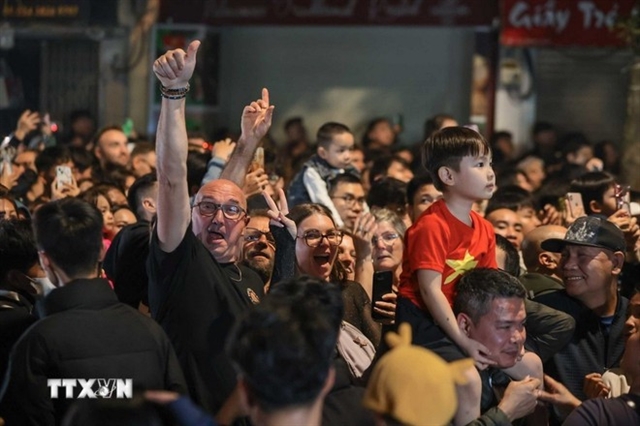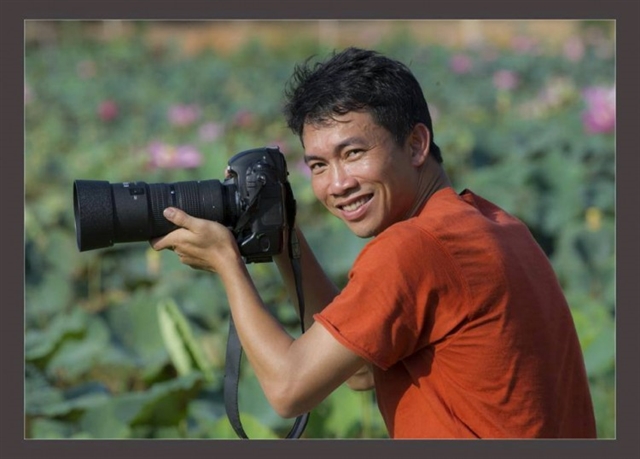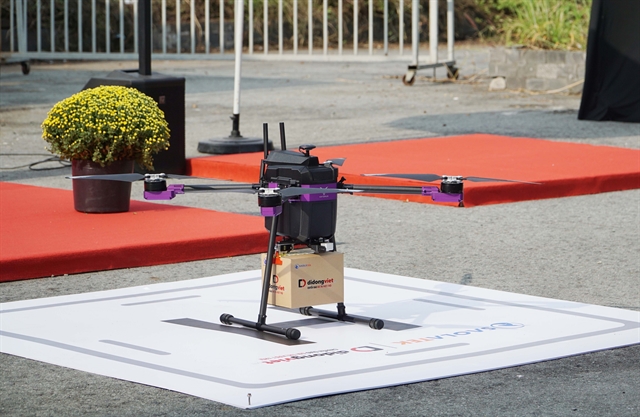 Life & Style
Life & Style

Nguyễn Việt Hùng has travelled over 7,000km through 28 coastal cities to capture 3,000 photos and videos of plastic waste. His solo exhibition entitled Save Our Seas held early this month in Hà Nội was the first in the country to focus solely on plastic waste.

|
| Photographer Nguyễn Việt Hùng |
Việt Quỳnh from Đại Đoàn Kết Chủ Nhật (Weekend's Great Unity) newspaper interviews Hùng about his project Save Our Seas.
How did the idea of travelling across Việt Nam to take photos of plastic waste come about?
Plastic waste has become a global problem that is threatening the future of mankind. Việt Nam ranks fourth in the world in terms of the amount of plastic waste it discharges into the ocean.
I have visited every coastal province in the country and seen for myself that the environmental situation is dire.
One of the reasons is public awareness about the importance of the marine environment, leading to limited protection. While many countries have clear plans to reduce plastic waste, there is not a clear path in Việt Nam.
With the Save Our Seas project, I wanted to travel the length of the country taking photos plastic waste to show people what is actually happening and what the consequences will be if we do nothing.
I also have to thank the Buddhist country of Bhutan where in 2017 I organised a photo tour for my students. Bhutan is the only negative carbon country in the world which means Bhutan absorbs more carbon than it emits.
"Dream Together A Dream!" is the Bhutan Prime Minister's statement about their national environmental strategy.
I sympathised with "Bhutan For Life" and hoped to start "Việt Nam For Life" and "Earth For Life". People are destroying themselves while destroying nature, and I also decided to carry out the Save Our Seas project after this trip.
How did you prepare for the project?
I spent a year studying about plastic waste, about how Việt Nam discharges and about the places I would visit. I also had to prepare finances for the trip. I started my journey in August 2018.
I departed from Hà Nội and I decided to divide it into two stages. From August to September I rode from Hà Nội to Ninh Bình and from there I followed the coast to Cà Mau Cape.
After that I followed the cost to Hà Tiên in the southern province of Kiên Giang bordering Cambodia and then returned to HCM City. In December, I went from Hà Nội to Nam Định and along the three remaining coastal provinces of Thái Bình, Hải Phòng via Cát Bà island and Quảng Ninh to Sa Vỹ Cape - the start of the country.
I prepared a motorbike with three panniers which carried mainly personal items and camera equipment. It would have been easy to fall so I had to use impact resistant kit to protect the flycam, a small underwater camera, lights and other necessary items.
Protective clothing is a must for a long motorbike trip, and I also had to protect my legs even though it was hot and inconvenient.
I only washed my clothes every seven days! There were many rough sections on the road and I even had to ride through sand. I carried a first aid kit with me and always had a whistle around my neck in case I needed it to call for help.
What challenges did you face on the trip?
During the trip I met rainy, windy days and nights without streetlights. I had to go along bad roads and desolate places. The risk of uncertainty was always lurking. Sometimes I came face-to-face with people who were illegally dumping and threatened to break my camera.
But the most difficult thing was still to overcome myself for a month and a half. Every day from 5-6am to 6-8pm I travelled 200km stopping lots to take photos. Many days I was so tired that I only had the energy to plug in the batteries for my equipment before falling asleep without taking my clothes off.
How were you able to take photos that have shocked so many people?
About ten years ago Pulitzer Prize-winning photographer Nick Út told me “you have to understand what you take”.
I think images have the ability to convey strong feelings because of the truthfullness and information contained in them.
At a beach full of garbage I had to wait for many hours without even having lunch at a spot to snap three women scraping their way through the trash as they looked for clams.
Are you surprised that your photos of plastic waste posted on social networks have received so much attention?
Actually, I am surprised. One post on my Facebook group has 4 million views and thousands of shares. Other media outlets have helped me to spread these photos. It's great that these photos are pushing a call for action.
As a professional photographer, I want to make my small contribution to changing community awareness of environmental pollution. VNS




